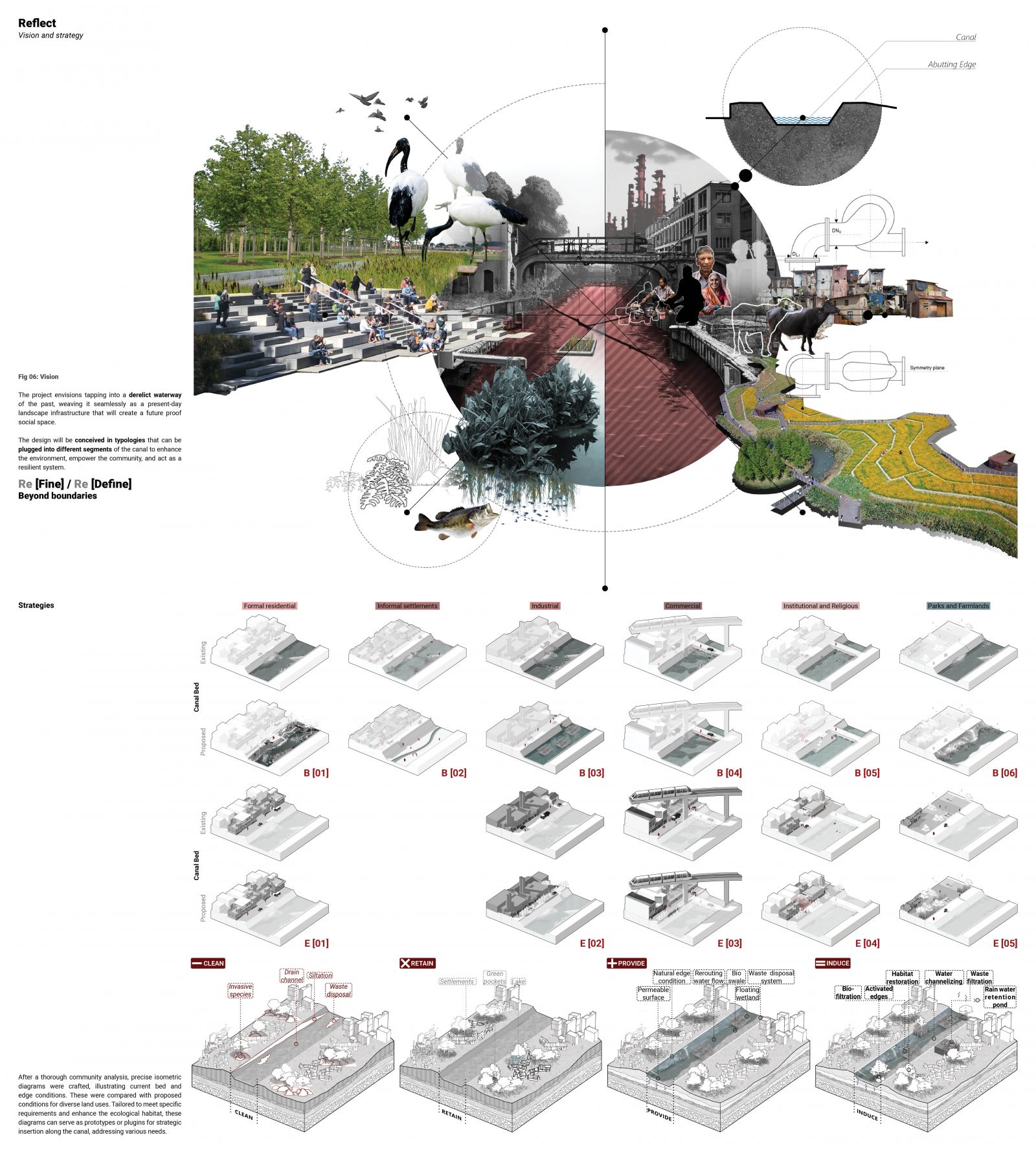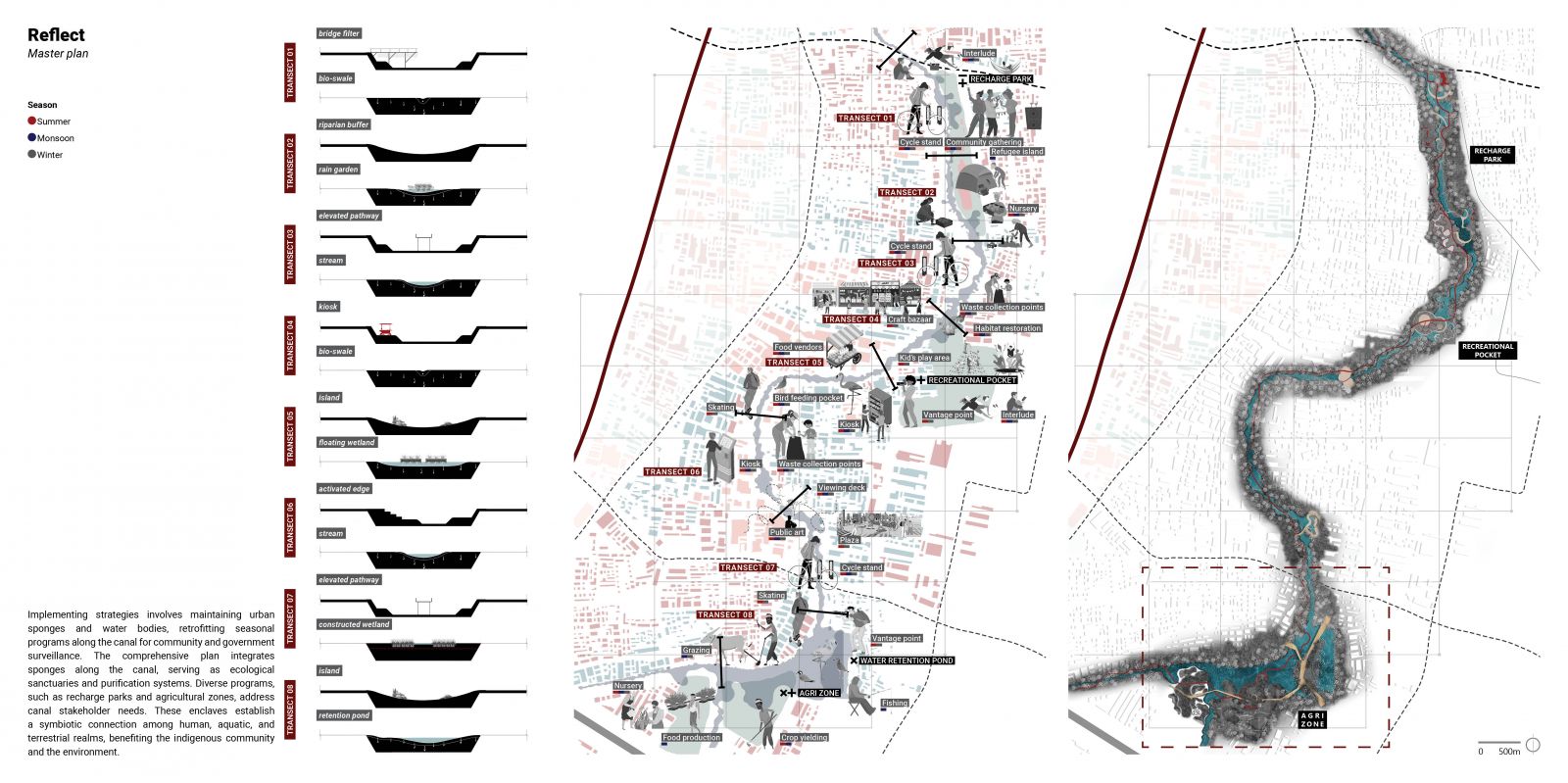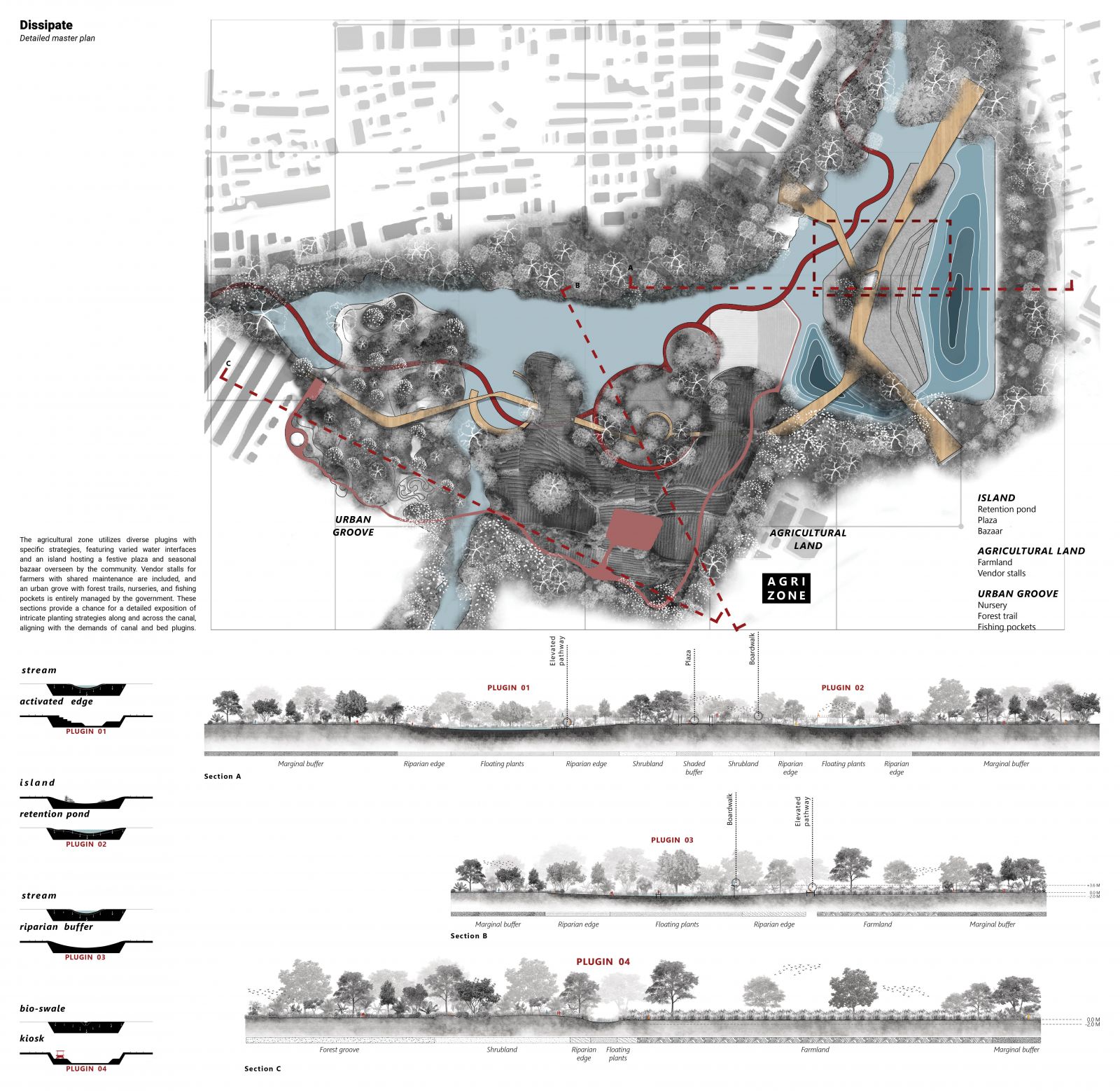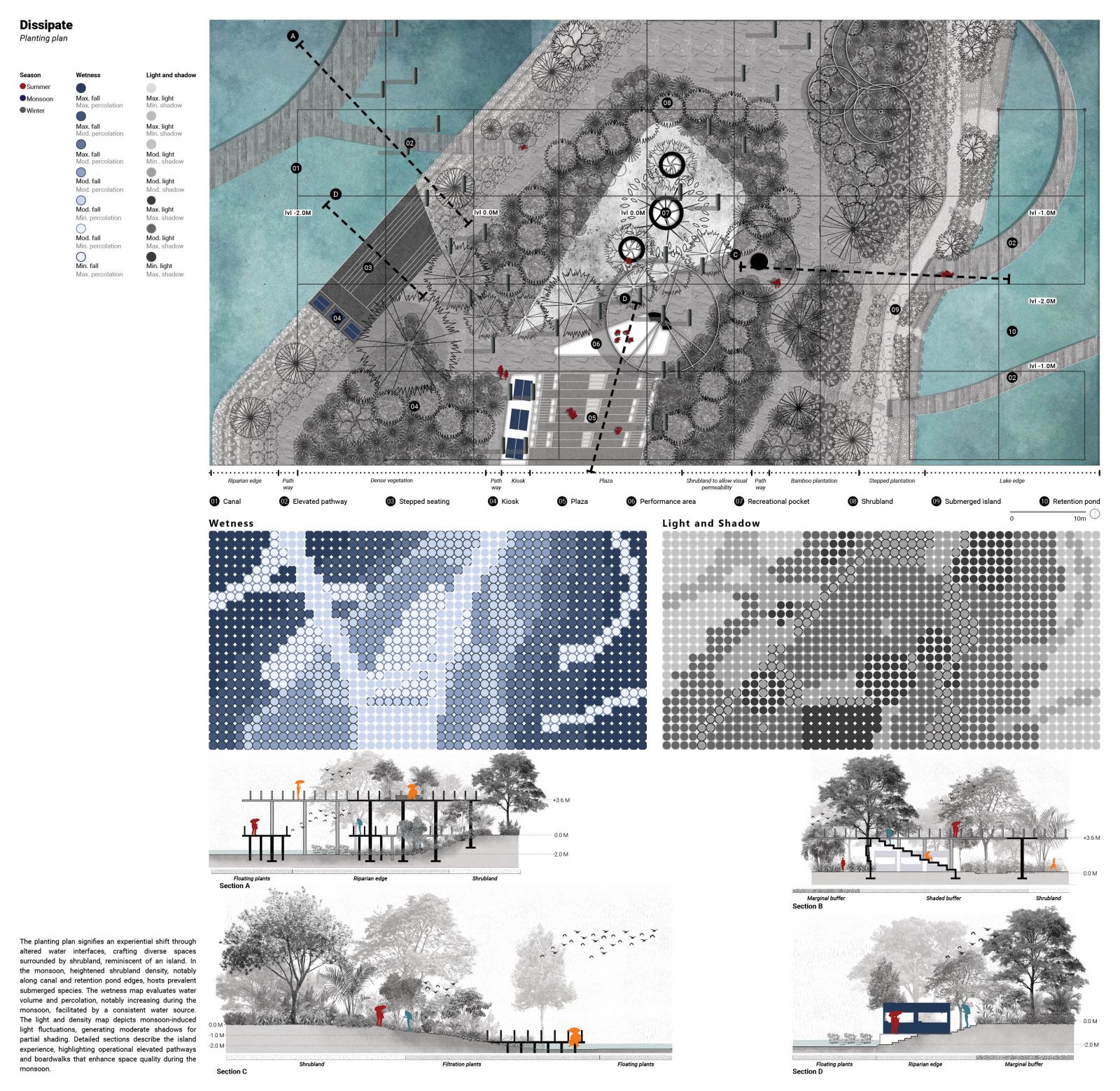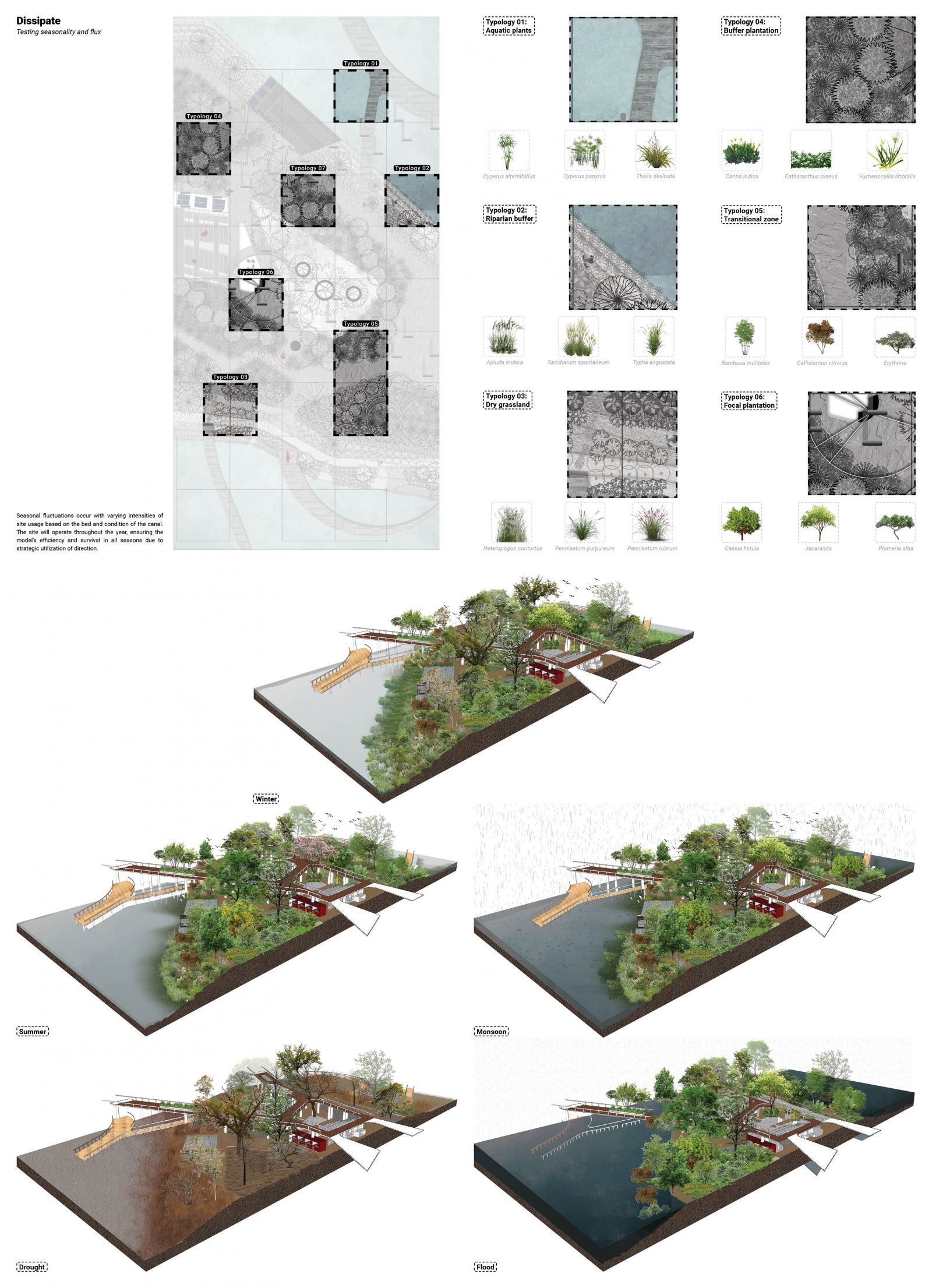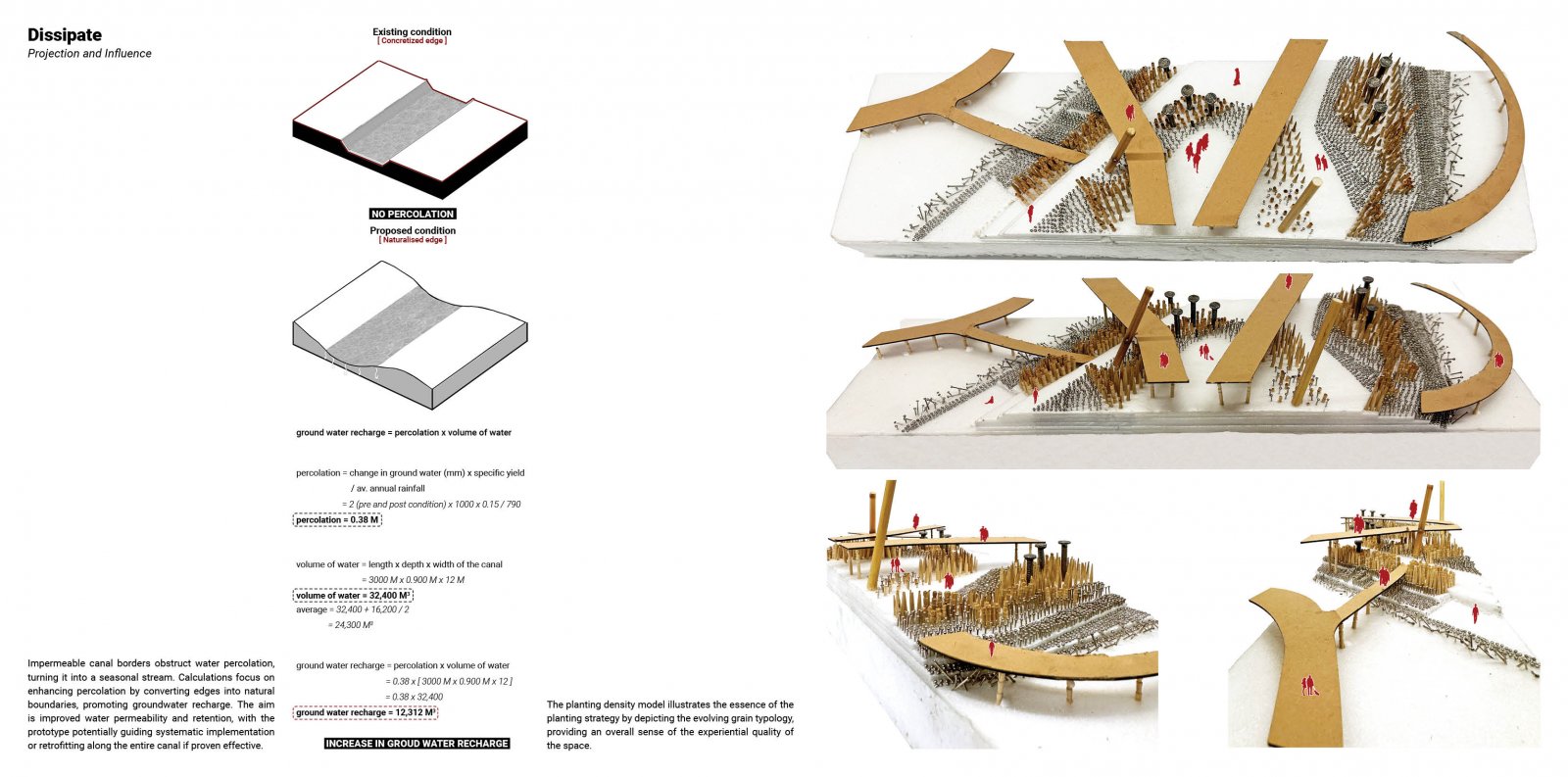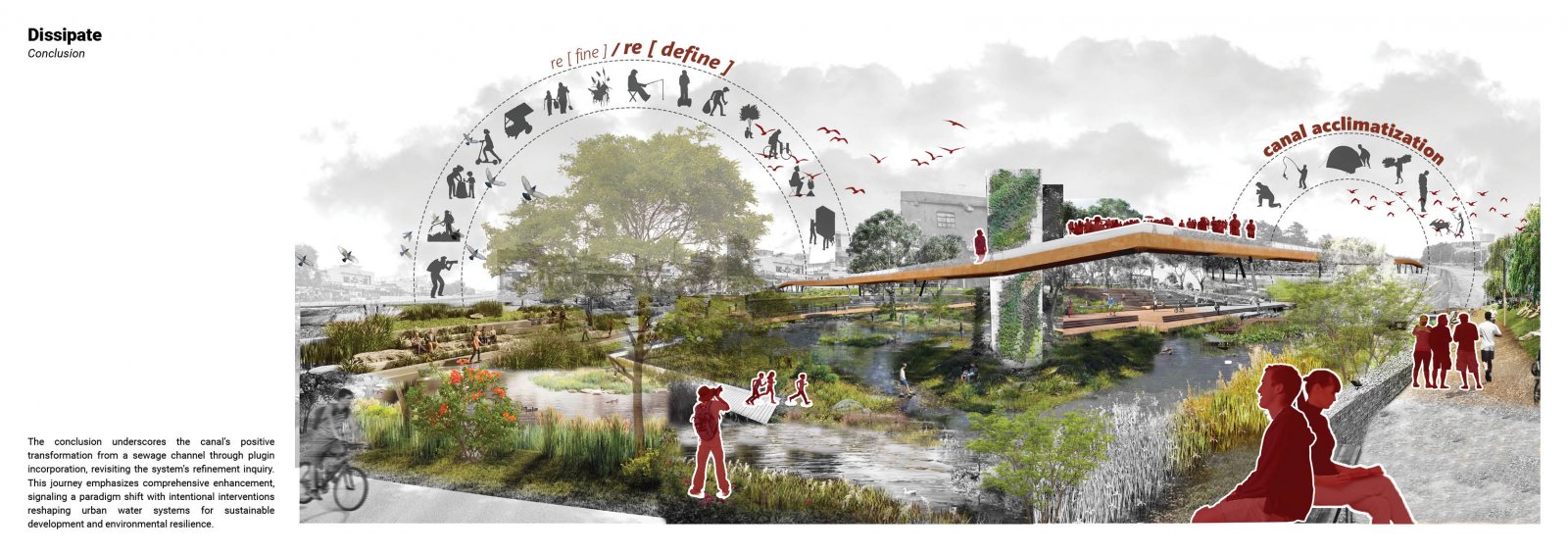Your browser is out-of-date!
For a richer surfing experience on our website, please update your browser. Update my browser now!
For a richer surfing experience on our website, please update your browser. Update my browser now!
The Kharicut Canal's evolution from a life-sustaining water source to a receptacle for sewage and greywater exemplifies the intricate challenges posed by rapid urbanization. The confluence of divergent stakeholder interests, coupled with limited awareness and ineffective recreational pursuits, has eroded its communal significance. This study proposes a community-driven approach, employing nature-based solutions to purify greywater and stormwater before reintroducing it to the canal. This not only enhances its visual appeal but also aligns with contemporary environmental standards. The proposal underscores a robust focus on strategically plugging in sponges which serve dual roles as ecological sanctuaries and water purification systems. These enclaves reanimate the ecosystem, fostering a symbiotic interconnection among human, aquatic, and terrestrial domains, conferring benefits upon both the indigenous community and the surrounding environment. The transformation of the Kharicut Canal symbolizes the complex challenges of rapid urbanization. This study advocates for a holistic community-driven approach, incorporating nature-based solutions and sustainable recreation to restore the canal's communal value and ecological integrity. The sponges serve as the linchpin of this transformative endeavor, offering a vision of harmonious coexistence between urban development and ecological conservation.
View Additional Work
